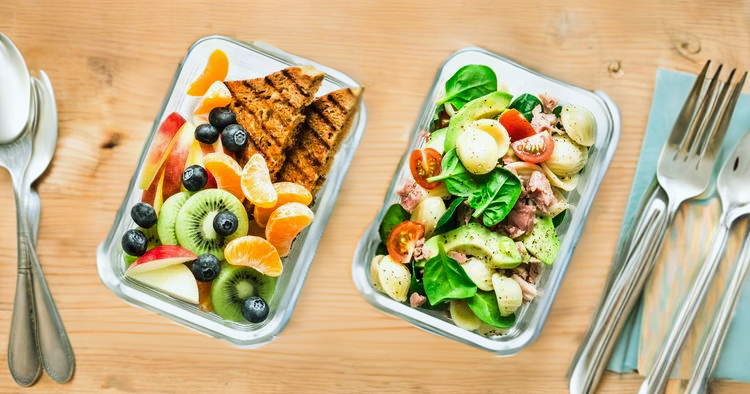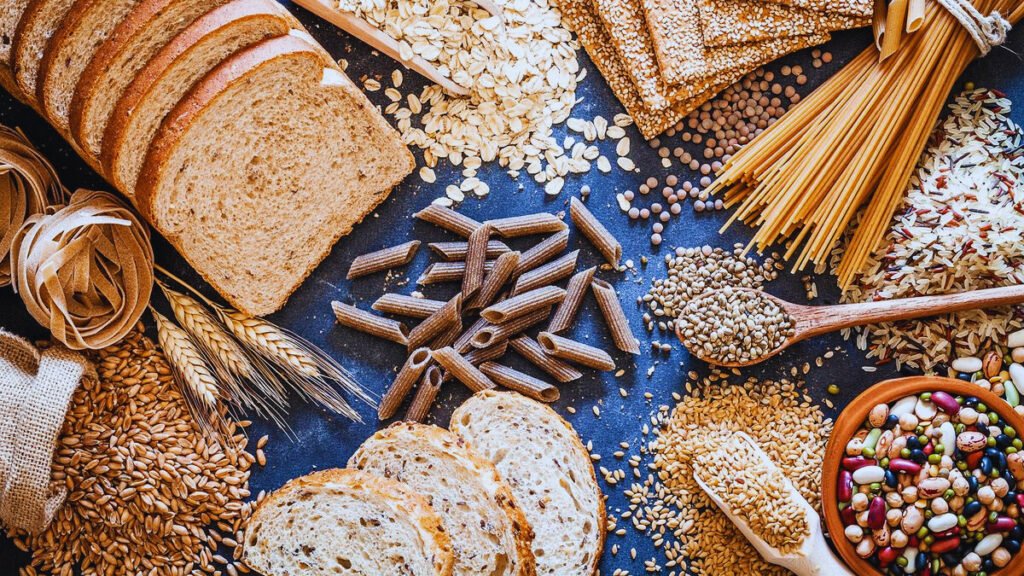Misconceptions
- Meals rich in nutrients are always costly
- All processed foods are deficient in nutrients
- Low-fat or fat-free meals are always better options
- Meals high in nutrients are boring and unappealing
- Carbohydrates are inherently bad for you
- Foods high in nutrients are solely good for your physical health
- You can’t get enough nutrients unless you eat exotic or specialty foods
Meals rich in nutrients are always costly
Although a lot of processed foods are rich in harmful fats, added sugars, and salt and poor in nutrients, not all processed foods are bad for you. Whole-grain bread, frozen fruits and vegetables, canned beans, and other less processed meals may all be nutrient-dense and practical choices.

There has been a widespread belief in dietary advice for decades that low-fat or fat-free meals are always better. But this claim needs to be looked at more closely because it oversimplifies the complicated role fats play in our health and food.
Taking in nutrients: Fats are needed to take in fat-soluble vitamins (A, D, E, and K) and some antioxidants. If you choose fat-free or low-fat foods, your body might not be able to absorb these important nutrients as well, which could lead to deficits over time.
Satiety and Satisfaction: Following a meal, fats help promote feelings of satiety and satisfaction. People who eat meals without fats may feel less full and be more likely to overeat or snack on less healthy foods later in the day, which can make it harder to lose weight.
Flavor and Palatability: Fats improve food’s flavor and palatability, which uplifts the mood and increases the satisfaction of meals. Taking fats out of meals might make them taste boring and unappetizing, which could make people less likely to enjoy their meals and stick to healthy eating habits in the long run.
Fats like monounsaturated and polyunsaturated fats, which can be found in nuts, seeds, avocados, and fatty fish, are important for heart health and general health. People may lose out on important nutrients and healthy chemicals if they can’t eat these healthy fats because they prefer low-fat or fat-free options.
Added sugars and processed ingredients: Most low-fat or fat-free foods swap fats with added sugars, artificial flavors, and processed ingredients that make the taste and texture better. When eaten in large amounts, these added sugars and additives can raise the chance of obesity, diabetes, and other long-term health problems.
Hormonal Balance: Fats are very important for keeping hormones in check and for the proper functioning of cells. Eating the right amount of healthy fats is good for your metabolism, hormone balance, and general health. Cutting back on fats too much could mess up these processes and be bad for your health.
Individual Variability: It’s important to know that different people have different nutritional needs based on their age, gender, level of exercise, metabolic rate, and underlying health conditions. Some people may do better if they eat less fat, while others may do better on a normal to high-fat diet.
Overall, it’s good for your health to eat fewer processed foods, fried foods, and trans fats. However, it’s not necessary to hate all fats and only eat low-fat or fat-free meals. A well-balanced diet that includes a range of whole foods that are high in nutrients and healthy fats should be the main focus for good health and well-being. Instead of just looking at the amount of fat in a food, people should focus on the quality of the fats and their general eating habits to help them reach their long-term health goals.
Low-fat or fat-free meals are always better options
Food makers often have to sacrifice flavor and texture in order to remove fat from their products, which forces them to boost taste by adding artificial additives, sugar, or salt. Because they include vital fatty acids and fat-soluble vitamins, full-fat meals may sometimes be higher in nutrients and more filling.

It is a prevalent misperception that prevents people from making healthy foods a priority in their diets that is, that meals high in nutrients are dull and uninteresting. But this idea ignores the wide range of tastes, textures, and cooking options that ingredients high in nutrients can provide. This is a thorough examination of the reasons why nutrient-dense foods can taste good, filling, and pleasurable:
Versatility of Nutrient-Rich Ingredients: A vast range of fruits, vegetables, whole grains, lean meats, and healthy fats are included in the category of nutrient-dense foods; each has a distinct flavor profile and culinary potential. There are a ton of delectable and healthy meal alternatives to try, from beautiful salads overflowing with fresh fruit to substantial grain bowls packed with colorful greens and lean proteins.
Creative Cooking Techniques: Nutrient-rich products can be transformed into delectable dishes by experimenting with different cooking techniques and taste combinations. Vegetables can be made sweeter and more caramelized by grilling, roasting, sautéing, or stir-frying them. Herbs, spices, citrus zest, and aromatic seasonings give food more flavor and complexity without adding a lot of salt, sugar, or bad fats.
Cultural Diversity in Cuisine: Drawing inspiration from diverse culinary traditions around the world opens up a world of exciting flavors and textures. Incorporating international flavors into nutrient-rich meals adds excitement and variety to the dining experience. Examples of these flavors include the robust spices of Indian curries, the zesty citrus marinades of Latin American cuisine, and the umami-rich broths of Japanese ramen.
Texture Contrast and Presentation: Nutrient-rich meals can be planned to provide a pleasing blend of crunch, creaminess, tenderness, and chewiness. Texture is an important part of the sensory experience of eating. Dishes gain interest and appeal when they use a range of textures, such as crispy nuts and seeds, creamy avocados, delicate grilled proteins, and al dente nutritious grains. Meals can also be visually appealing and more attractive by paying attention to presentation, such as creatively arranging components on the plate.
Balanced Flavor Profiles: Eating a lot of plain salads or steamed veggies isn’t the only way to enjoy nutrient-rich meals. To make dishes that meet cravings for a wide range of flavors, chefs make sure that they have the right amount of sweet, savory, tangy, and spicy ingredients. Nutrient-dense foods can have their flavor profile enhanced by adding umami-rich nutritional yeast to popcorn or serving roasted root vegetables with a tart balsamic sauce.
In conclusion, the idea that nutrient-dense foods are bland and unappetizing is a false belief that doesn’t take into account the culinary possibilities and sensory wealth of these foods. By being open to new ideas, trying different flavors, and paying attention to texture, presentation, and balance, people can find a wide range of tasty and enjoyable meals that are good for their bodies and minds. Healthy eating can be viewed as a chance for gourmet delight and culinary adventure rather than as a chore.
Meals high in nutrients are boring and unappealing
When cooked correctly, nutrient-dense meals may be tasty and adaptable. Nutrient-dense meals may have their taste enhanced without compromising their healthfulness by adding herbs, spices, marinades, and healthy fats like avocado or olive oil.
Carbohydrates are inherently bad for you
Carbohydrates are an important source of energy and essential nutrients, particularly when they come from whole, minimally processed sources such as fruits, vegetables, whole grains, and legumes. These foods are essential parts of a balanced diet since they are high in fiber, vitamins, minerals, and antioxidants.

Foods high in nutrients are solely good for your physical health
Nutrient-dense meals promote mental and emotional wellness in addition to providing vital nutrients for physical health. Certain nutrients are important for brain health, mood management, and cognitive performance. Examples of these include antioxidants, B vitamins, and omega-3 fatty acids.
All processed foods are deficient in nutrients
Although a lot of processed foods are rich in harmful fats, added sugars, and salt and poor in nutrients, not all processed foods are bad for you. Whole-grain bread, frozen fruits and vegetables, canned beans, and other less processed meals may all be nutrient-dense and practical choices.
You can’t get enough nutrients unless you eat exotic or specialty foods
A lot of everyday, reasonably priced foods are high in important nutrients. For instance, spinach and kale are loaded with vitamins and minerals, while beans and lentils are great providers of protein and fiber. Consuming a wide variety of whole foods is often more affordable and sustainable than depending on expensive or difficult-to-find specialist goods.
By clearing up these myths and highlighting how important it is to include a range of nutrient-dense foods in one’s diet, people will be better equipped to make educated food decisions that will enhance their general health.
Frequently Asked Questions:
- Question: How do fats contribute to overall health, beyond simply being a source of calories?
Answer: Fats aid in nutrient absorption, promote satiety, and contribute to flavor, while certain types are crucial for heart health. - Question: What are some misconceptions surrounding nutrient-dense foods, and how can these misconceptions be challenged?
Answer: Nutrient-dense foods offer culinary diversity and flavor when creatively prepared, challenging the misconception that they’re dull. - Question: What role do carbohydrates play in a balanced diet, and what are some examples of healthy carbohydrate sources?
Answer: Carbohydrates are vital for energy and provide essential nutrients; healthy sources include fruits, vegetables, whole grains, and legumes.











